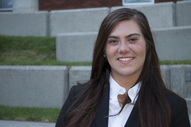|
By Chelsea Travers Time: July 26, 2013. 11:22 pm. “Time flies. Time waits for no man. Time heals all wounds. All any of us wants is more time. Time to stand up. Time to grow up. Time to let go. Time.” – Grey’s Anatomy Timing is the “frienemy” of all medical school applicants. From the moment one starts undergrad, the relationship with Father Time becomes paramount. Questions about the future begin to haunt the psyche–questions such as when to take the proper classes, when to take the MCAT, when to apply, what to do with those three months in the summer, etc. Answering these initial questions about scheduling your pre-application life will make you a more prepared applicant and allow you to apply early. This urgency is a cardinal rule of the med school applications monster: Rolling admissions means that there are fewer spots the longer you wait, leading to fewer interview offers and thus fewer chances to show off your awesome self. As time ticks by, more questions evolve. For example: When will I get my score, when should I submit my primary (or secondary) application, when will I interview, and what am I doing with my life? I am currently at this stage. I received my MCAT score two days ago. Nearing the end of my month in purgatory, I had talked myself into a deep hole of dismay. I had convinced myself that I would have to take a gap year and start making a new study schedule. The morning before I found out, I went for a run and planned my response to the inevitable inquiries from my peers and mentors. After work, I checked my phone nonchalantly and found out that I had gotten a 29. The score distribution was 10 verbal, 9 physical, 10 biological. Was this possible? Had I logged into the wrong account? I had not only avoided a seven in verbal, but I had scored in the double digits, and the only thing I could think was, “I don’t have to do physics ever again (hopefully)!” I ran home and added schools to my primary application (M.D.). I had submitted it early in the application season (twelve days after submissions opened) without reference letters or MCAT scores in order to initiate the verification process, but now I had to update it based on my scores. I then submitted the D.O. application as well. After spending nearly $800, I am now a sitting duck, once again. The days go by as I wait for verification. However, I am relieved that I sent the application early. Stepping away from all this talk of time and the selection process, I would like to expand on how I chose the schools I applied to. MSAR, a.k.a. the medical school bible, is the most accurate and reliable source of information. This search engine provides information on schools’ requirements, matriculate information and so much more. The summer before I took the MCAT, I researched every private school and entered all the pertinent stats into a spreadsheet. Later, I would use SDN, Prospective Doctor, MD Applicants, and suggestions from my pre-med peers who had made their rounds in the interview circuit to help me finalize the list for both M.D. and D.O. schools. Some key features I looked for were the MCAT acceptance range, MCAT median for each section, science and cumulative GPA, number of out-of-state (OOS) matriculates/applicants, research or philanthropic focus, public or private, size of incoming class, and location. Using spreadsheet technology, I narrowed my school list down to sixteen M.D. and five D.O. schools. To decide how many schools of each type you should apply to, look at your finances and your likelihood of getting into M.D. or D.O. schools. Don’t cut yourself short, but don’t waste your time applying to schools that may be unrealistic. It’s a fine balance I have not entirely mastered. I believe that I have put together a realistic list with a good balance of fallback and reach schools, but we will see. Take away points: 1) Take the MCAT as early in the application cycle as you can. 2) Research medical school requirements early so as to not limit yourself. 3) Send your application in for verification as early as possible, even if you don’t have your letters/MCAT score. 4) Talk to people who have been successful. Further Reading: - http://www.medschoolpulse.com/2012/09/20/med-school-admissions-statistics-part-i-how-many-people-get-into-medical-school/#comments - http://startmedicine.com/App/application.asp - More about time: http://studentdoctor.net/2009/03/the-application-process-why-apply-early/ - From someone who got in: http://studentdoctor.net/2012/04/getting-into-medical-school/ - Gold nanoparticles help heart cells: http://www.israelnationalnews.com/News/News.aspx/170108#.UfNmdW2Bohl - Cancerous tissue detected in three seconds: iKnife
Chelsea Travers is a biology major and chemistry minor at Pacific Lutheran University in Tacoma, WA. Originally from Las Vegas, she has traveled from the desert to the rain in hopes to get closer to her dream of becoming a doctor. Comments? Leave them below!
0 Comments
Your comment will be posted after it is approved.
Leave a Reply. |
Education BlogAbout ScientistaSubscribe!NEW!New PostsWhat's HotClick to set custom HTML
You Might Like...
Connect With UsLatest tweets |
The Scientista Foundation, Inc. All Rights Reserved © 2011-2021 | Based in NY | [email protected]
The Network for Pre-Professional Women in Science and Engineering
The Scientista Foundation is a registered 501(c)(3) -- Donate!
The Network for Pre-Professional Women in Science and Engineering
The Scientista Foundation is a registered 501(c)(3) -- Donate!




 RSS Feed
RSS Feed









